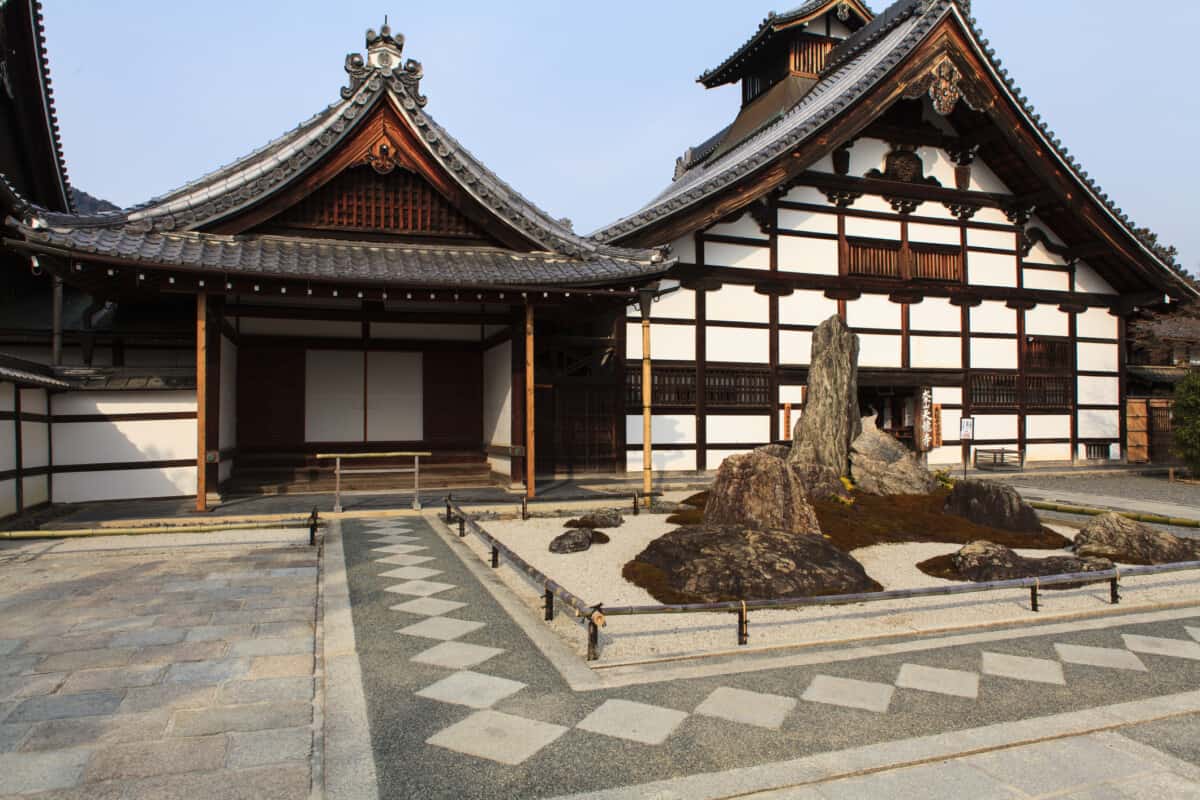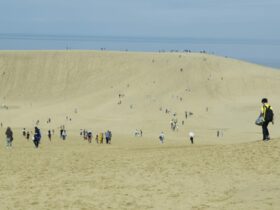Tenryuji is considered the most prominent temple in Kyoto’s west Arashiyama district. Tenryuji is the chief temple of the Tenryu sect of Rinzai Zen Buddhism. It is rated first among Kyoto’s top five Zen temples, or Gozan, including Shokoku-ji, Nanzenji, Kenninji, and Tofukuji. However, this ranking has fluctuated throughout time.
Continue reading to learn more about the Tenryuji Temple Zen Temple in Kyoto’s Arashiyama neighborhood, as well as why it should be on your exploration of the Kyoto area.
What is the Tenryuji Temple Near the Arashiyama Area of Kyoto?
The most prominent temple in Kyoto’s Arashiyama neighborhood is Tenryuji temple. It was formerly the most important of the city’s five main Zen temples, and it is now considered a UNESCO World Heritage Site.
Tenryuji is also the chief temple of its own school of Japanese Buddhism, the Rinzai Zen sect.
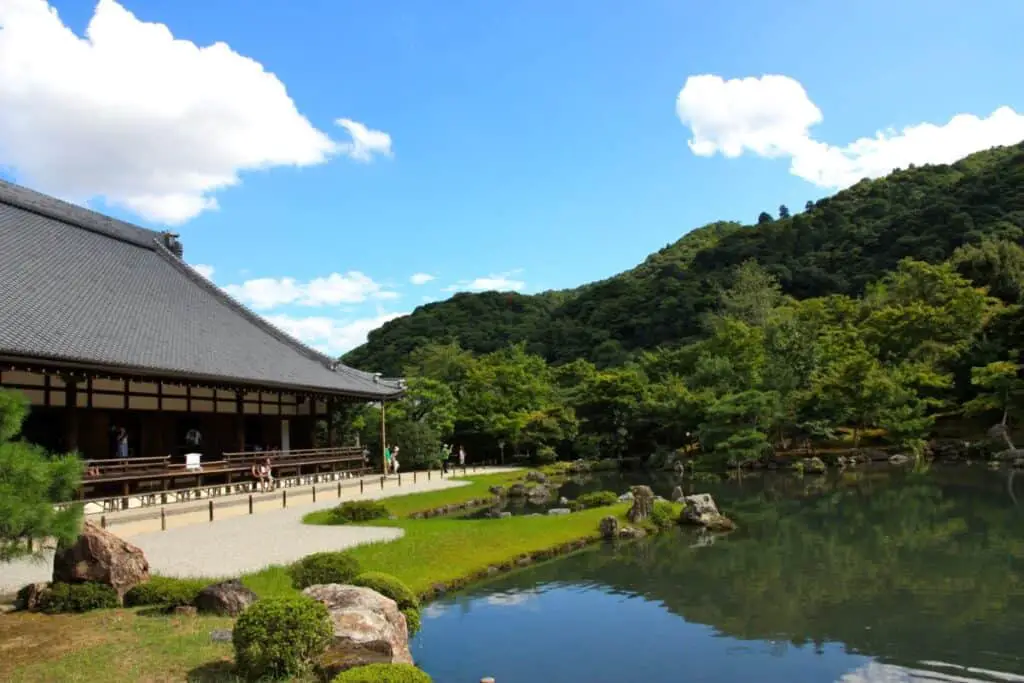
What Kind of Temple is Tenryuji Temple?
Tenryuji is a temple in the Rinzai sect where people seeking enlightenment conduct Zazen meditation while solving Koan riddles as part of their Buddhist practice. Tenryuji is the most prominent of Kyoto’s Gozan temples, commonly known as Japan’s Five Great Mountain Temples, all significant Zen Buddhist icons in Kyoto.
Many people visit this Zen temple and Sogenchi Teien, which has been classified as Japan’s first Special Historical Scenic Spot, to pay tribute, observe the lovely surroundings, and feel the tranquil mood unique to this Zen temple and Sogenchi Teien.
Buddhist temples of the Rinzai and Soto sects are included in Zen temples.
Where is Tenryuji Temple Located?
Tenryuji temple is located in Arashiyama, amid the picturesque Arashiyama Bamboo Grove. The Zen temple, founded in 1333 by Shogun Ashikaga Takauji, is an amazing attraction and well-preserved.
The Katsura river runs on the temple’s southern side, while the Kameyama mountain dominates its western side, adding to its beautiful Shakkei-style garden.
Tenryuji Temple Location Via Google Maps
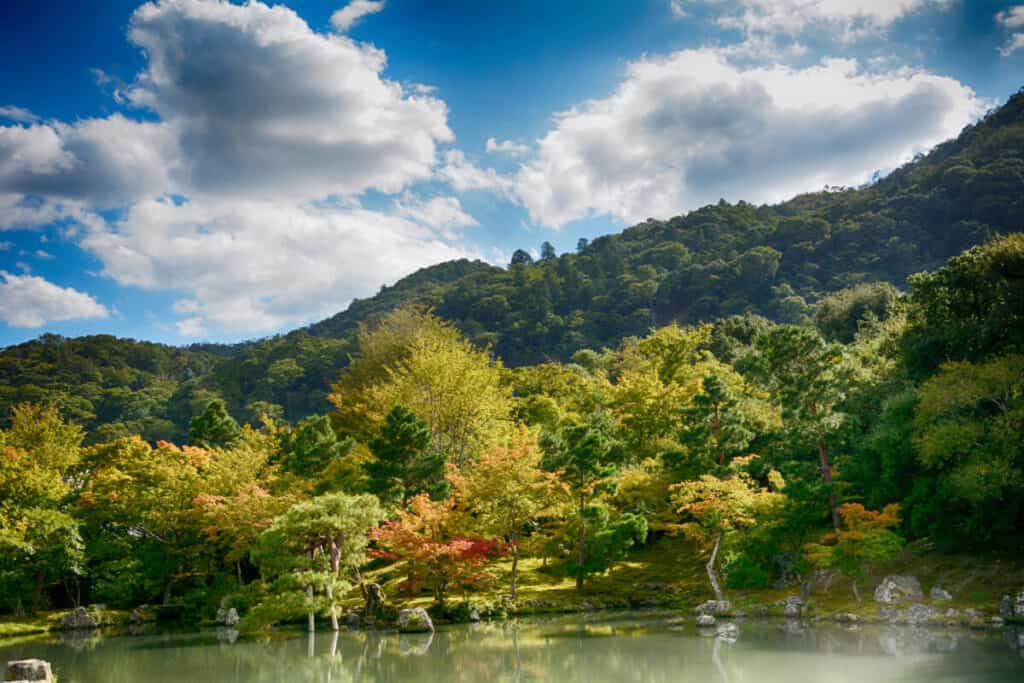
Tenryuji Temple’s Background
Tenryuji was founded between 1305 and 1358 by the Shogun Ashikaga Takauji in honor of the Gautama Buddha.
Prior to the establishment of Tenryuji, Empress Tachibana no Kachiko, Emperor Saga’s wife, established Danrin-ji, a Buddhist temple on the same site.
However, Emperor Gosaga and his son Emperor Kameyama turned the gardens into an imperial villa in the mid-thirteenth century.
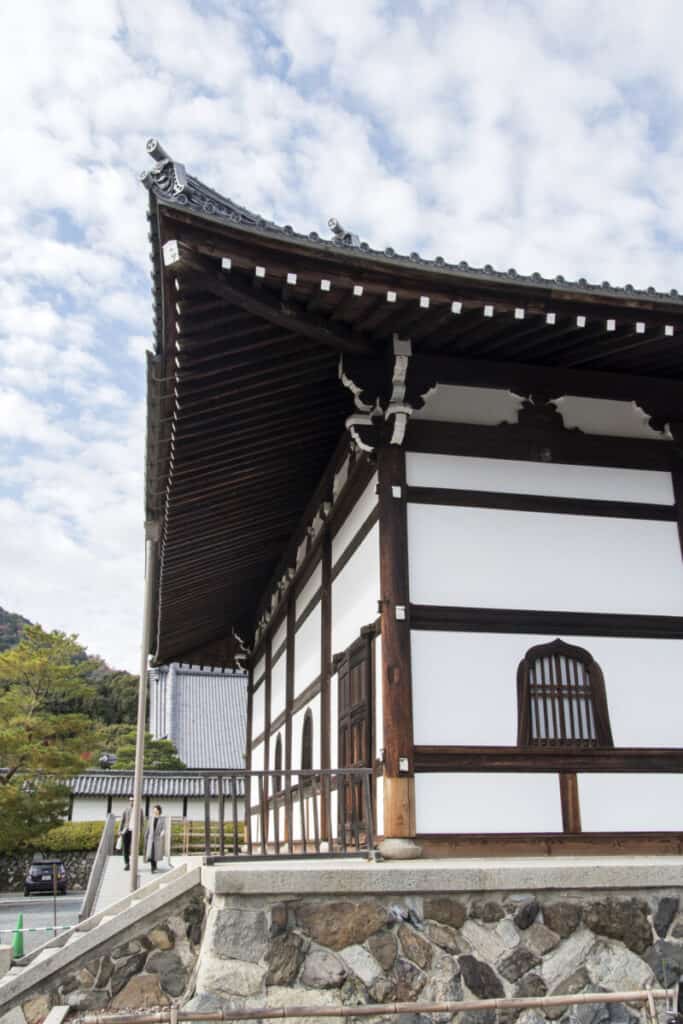
Subsequently, Ashikaga Takauji renovated the villa into a shrine to host a memorial ceremony for Emperor Go-Daigo. He formerly served as a general but later turned against, thereby alleviating the emperor’s spirit.
Tenryuji Temple was a huge success, and it eventually developed into 150 sub-temples.
On the other hand, the temple was destroyed by fire five times in the 14th and 15th centuries, then again during the Onin War in 1815, and numerous temple buildings and treasures were lost during the Hamaguri Rebellion in 1864.
Tenryuji as we know it now originated during the Meiji Period.
Tenryuji Zen Temple Has Suffered Eight Devastating Fires
Tenryuji has been the victim of no less than eight large fires throughout history, the most severe in the mid-1400s and another in 1864. When the restoration from the previous fire was still proceeding in 1877, the Meiji government, which had gained power in 1868, confiscated the majority of the temple’s holdings.
As a result, Tenryuji had little money to spend on building restoration. Construction was completed in stages over the next several years, with a new main hall and housing quarters completed in 1900 and a reception hall completed in 1924.
The existing lecture hall and buddha hall were once the meditation hall. However, since it was the only structure that survived the 1864 fire, it was relocated and repurposed in the years that followed.
Why Visit Tenryuji Temple?
Traditional Japanese Gardens
The Hyakkaen garden in Tenryuji is extremely popular in the spring and fall. Tenryuji Temple also has a hanchi, or square entry pond, which is filled with lotus blossoms.
The main structure’s Japanese rock and stone garden is also well-known at Kogenji.
The sword marks made by samurai from Choshu, present-day Hagi, who exercised swordsmanship here in the 1860s may still be seen on the pillars of the main hall.
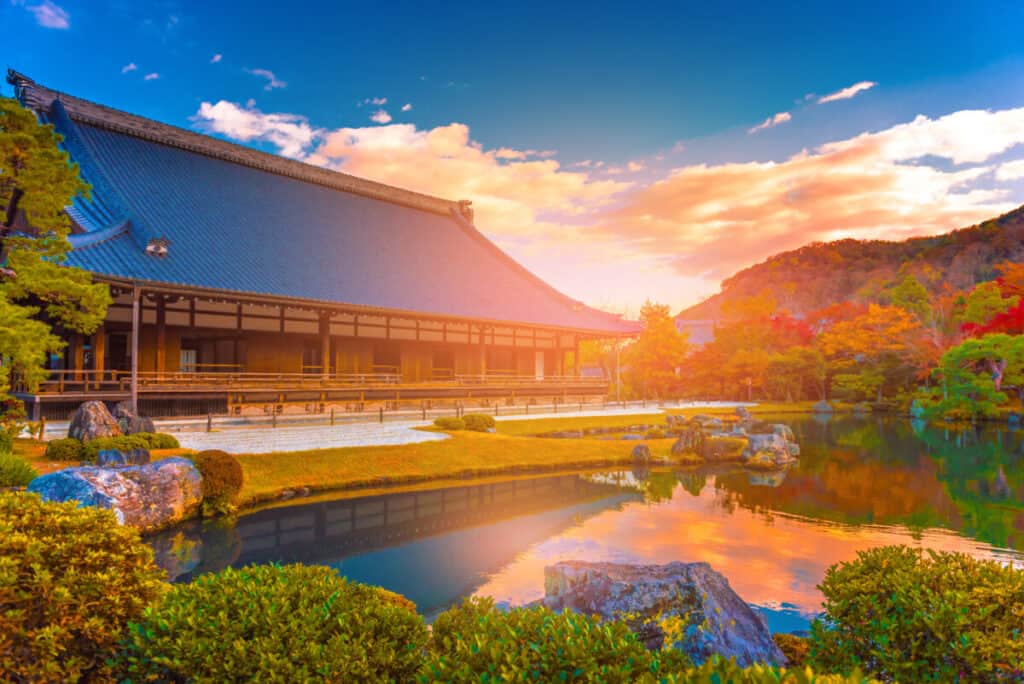
Traditional Japanese Art
Portraits of the temple’s first head priest, Muso Soseki, a wooden carving of Gautama Buddha, and countless drawings are among the Important Cultural Properties found at Tenryu-ji. The Hatto Hall’s ceiling is also decorated with a massive circular Cloud Dragon.
Daruma-zu at Kuri Hall
Kuri Hall, a monastery with massive triangular walls, is located at Tenryuji Temple’s Main Gate. It serves as a kitchen as well as a temple office. The entryway has a welcome desk for visitors to the temple halls.
The building’s façade has white walls with vertical and horizontal beams and a fantastic curving roof.
Tenryuji Temple’s divider in the rear of Kuri Hall is adorned with a large painting of the Daruma-zu, or Bodhidharma, and is a popular tourist attraction.
The image is based on the Dharma Master, a Zen Buddhist ancestor who brought Zen Buddhism from India to China.
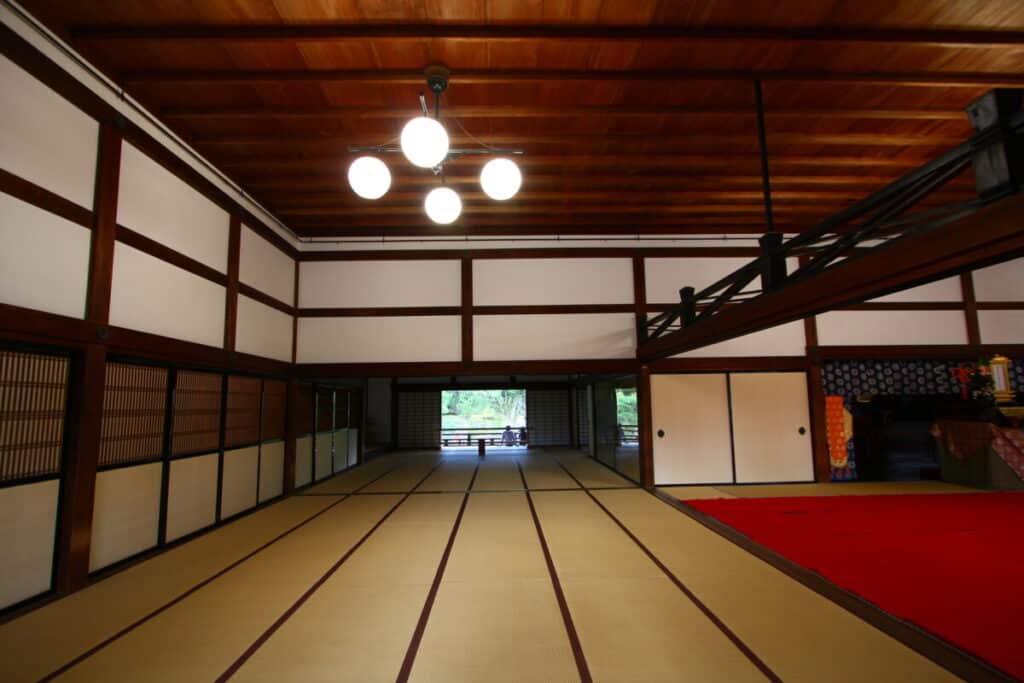
The Sogenchi Pond ; Garden
The Sogenchi pond and garden, designed by Muso Soseki and known for its borrowed scenery effect, is one of Kyoto’s oldest landscaped gardens. Muso Soseki also designed the grounds of Katsura’s Moss Garden.
The lovely temple garden, also known as Sogenchi Garden, is behind the Hojo structure. Muso Soseki, the founding abbot, established the garden almost 700 years ago.
Despite the numerous natural fires that have devastated the temple throughout the years, the garden has survived and maintained its original form and design.
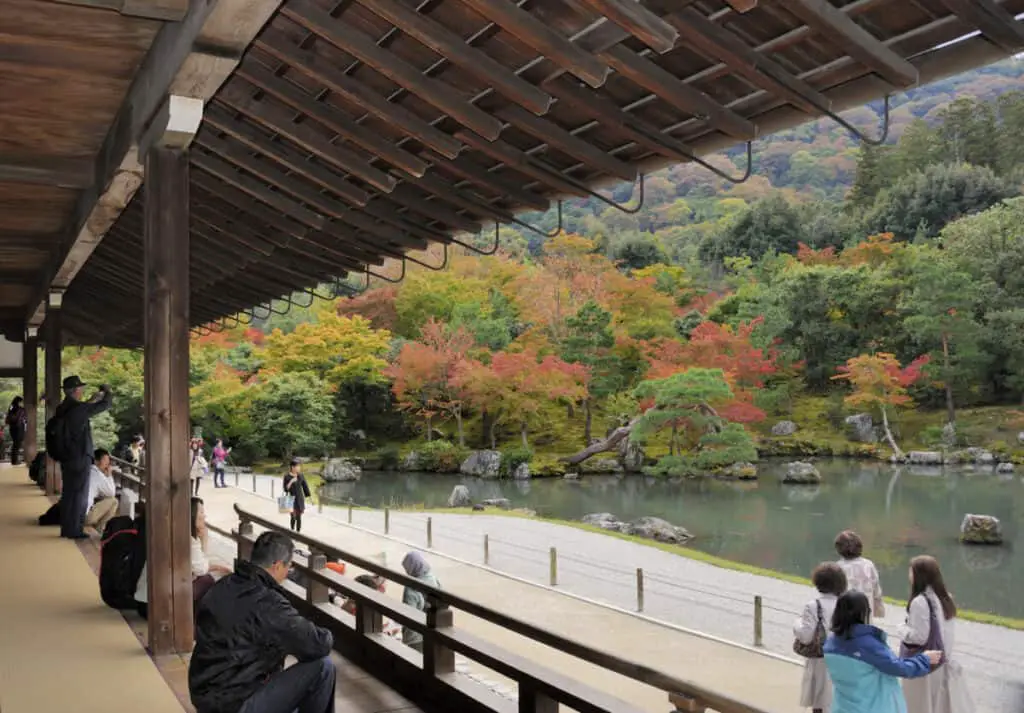
Sogenchi Garden, centered on a tranquil pond, is a shakkei-garden. Shakkei gardens are a type of Japanese garden style that uses a natural backdrop to make the Sogenchi garden appear to be a natural extension of the surrounding environment. As a result, there is no obvious distinction between the exterior and inside of the garden.
Sogenchi Garden is lovely at any time of year, but it is especially lovely in the fall when the leaves turn crimson. Be aware that both the garden and the temple have admission costs, with the garden admission alone costing 500 yen.
Tenryuji Temple is a Sacred Burial Ground
Emperors Gosaga and Kageyama are also buried at Tenryuji within the temple grounds.
Visit Tenryuji’s Sub-Temples: Tenryuji Hogon-in and Kogenji
Tenryuji Hogon-in and Kogenji are two sub-temples of Tenryuji that are only accessible for a few weeks in the spring and fall and can be visited as part of a combination ticket.
Hogon-in is notable for its fall hues and its rock and moss walk garden.
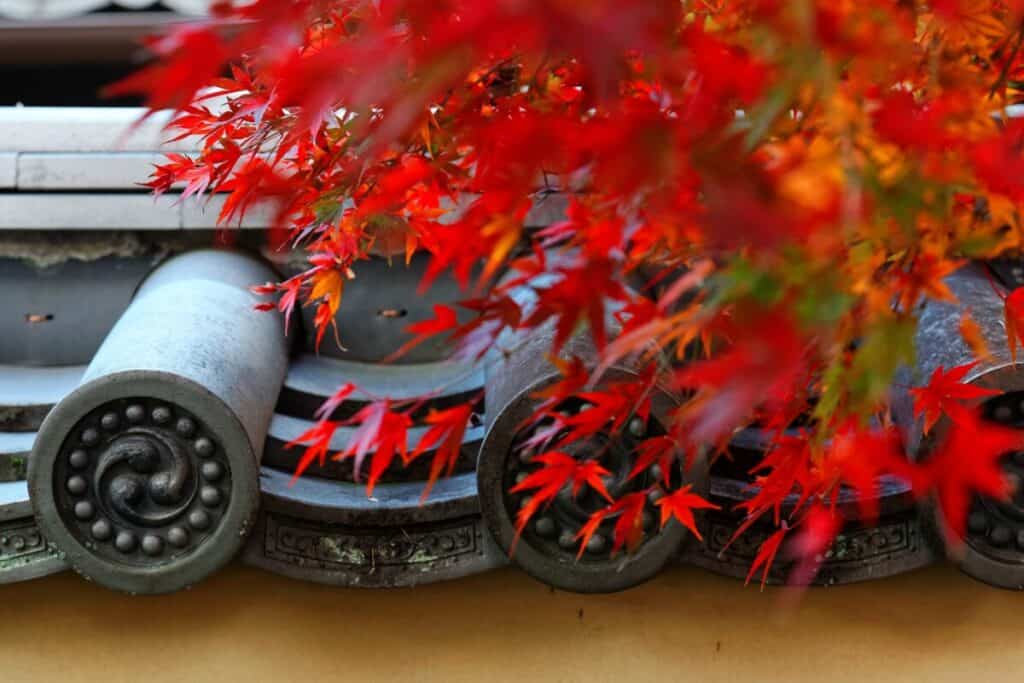
The Tenryuji Vegetarian Restaurant
Shigetsu, a well-known Zen vegetarian restaurant on the grounds of Tenryuji Temple, serves classic shojin ryori set dinners. The Tenryuji Vegetarian Restaurant is open daily from 11 am to 2 pm and can accommodate up to 250 people in tatami-floored rooms with garden views.
Shigetsu was recognized in the 2016 Michelin Guide for Osaka and Kyoto as an excellent restaurant with reasonable rates. For further information, visit Shigetsu’s English website.
Tenryuji Vegetarian Restuarant Temple Website
Changing Scenery with the Seasons
Tenryuji’s range of unique natural sceneries that change with the seasons is another of Tenryuji’s beauties. Summers are vibrant with plentiful vegetation and a beautiful blue sky.
While spring delivers blooming cherry blossoms, the fall is brilliant with autumn foliage, and the spring brings cherry blossoms.
Even the hard, icy winter has its own stunning scenery. Rainy days are also relaxing, thanks to the soothing sounds of falling raindrops.
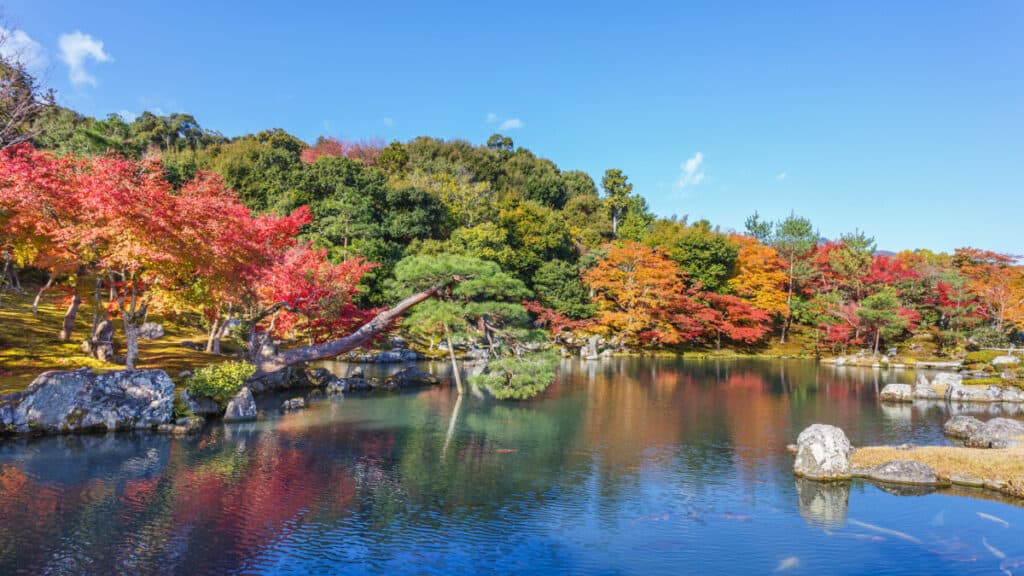
Tenryuji Temple Zen Experiences
Tenryuji temple gives visitors beautiful grounds and old artwork and the opportunity to learn about the temple’s religious life. Except for February and August, the second Sunday of each month has a public meditation session starting at 9:00 am and lasting for an hour. Visitors may also try their hand at calligraphy by practicing shakyō.
How to Get to the Tenryuji Temple Near the Arashiyama Area of Kyoto?
Tenryuji Temple Official Website
Tenryuji is a short walk from the Keifuku Arashiyama Station, connected to the Ryoanji neighborhood and Omiya Station via Shijo-Dori Street by the tiny Keifuku trains known as Randen.
Take the JR San-in Line from the Kyoto Station to the Saga-Arashiyama Station. From there, the Tenryuji shrine is a 12-minute or half-mile walk from the station. The Japan Rail Pass covers this train.
It is also possible to use the Randen Line, a smaller, private train line that runs from Kyoto’s Shij-Miya Station to Arashiyama Station. The journey takes 24 minutes and costs 220 yen. The Kansai Thru Pass covers this rail line.
Buses 61, 72, and 83 from Kyoto will also stop at the neighboring Arashiyama Tenryu-ji Mae bus station. Shi buses 11, 28, and 93 also stop here.

